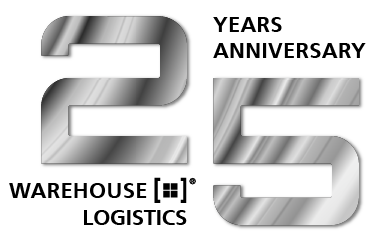News
Industry solutions from agriculture, gardening and forestry!
12.04.2022
Our customers from the agricultural, horticultural and forestry sector particularly appreciate these module components of SuPCIS-L8!
Large usable space warehouses that need to be well organised, a complete and transparent overview of the material flow of goods or efficient handling of large and small parts in the warehouse - all this is needed in companies operating in the agricultural, horticultural and forestry sector. Added to this is reliable system support in the form of a warehouse management solution, such as our warehouse management system SuPCIS-L8. Our WMS supports industry-specific processes as standard - customers can choose from a wide range of standard processes. The highlight: individual process requirements can be easily and quickly integrated into the existing standard components thanks to a lean framework. Typical processes that we find again and again in customer projects are, for example: the management of serial numbers and batches, the possibility of workshop order processing, as well as the integration of multi-order picking.
Hand-in-hand: software, man and machine
A key advantage in SuPCIS-L8 for the agricultural, horticultural and forestry sector is the configurable multi-order picking process. In combination with mobile terminals, this ensures route-optimised and paperless picking in the warehouse.
This is often supplemented by mobile consolidation, packaging and loading processes and optimised with regard to small and large order processing. In order to make the handling of mobile processes as simple and convenient as possible for the employees, wearable scanners such as the ProGlove MarkDisplay can be connected in addition to MDE devices. For the user, this creates the advantage of ergonomic and error-minimised processing, especially in the area of order picking. Thanks to the integrated display, employees are guided easily and quickly through the entire order picking process - the display shows the storage compartment, item number and quantity to be picked. The data required for the process is transferred from the WMS SuPCIS-L8 to the scanner via Bluetooth. In combination with forklift terminals, the operator can receive the feedback decentrally on the scanner and does not have to read it on the forklift terminal.
The workshop order processing process supports the smooth assembly and production of (customer-specific) products. Employees can book both manufacturing costs and processing times directly to the sales order in the WMS - subsequently, the workshop papers can be printed and, after the data has been reported back to the ERP, the expenses for the services can also be invoiced there.
Transparent, efficient and innovative on the move - warehouse management with SuPCIS-L8
A characteristic requirement for the industry is the functional support of (integrated) batch and serial number management. With regard to the management of batches, it is the case that it is determined in the master data which products must be managed with a batch number. If a product is »subject to batch management«, the data is already recorded at goods receipt and checked against the configured specifications. In this way, it is also known within the warehouse in which storage location which batch is located. The entry can be made manually, by scanning or by RFID. The entered batch number then remains unchanged for all goods movements - whether internally or during delivery to an external location - and is continuously recorded. For outbound deliveries, the recorded batches can also be reported back to the ERP system for each delivery. In this way, complete batch tracing is possible at any time.
The serial numbers of products can also be notified by the ERP via NVE and, depending on the configuration in the WMS, can be recorded in the process flow during goods receipt, order picking or at the packing station. For this purpose, it is possible to define in the article master which additional information is to be requested during picking. In the example mentioned, the employee receives a request to scan the serial number during the picking process, which is then noted in the order. The entry of the serial number can also be done manually, but it also serves to check the count when several items are picked, as the scans are compared with the target quantity.
Industry-typical processes in the standard, efficient processing and a transparent overview of the material flow enable future-proof warehousing.
Would you like to learn more about the potentials? Feel free to contact us at any time!
